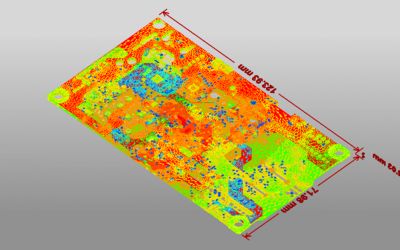-
United States -
United Kingdom -
India -
France -
Deutschland -
Italia -
日本 -
대한민국 -
中国 -
台灣
-
-
產品系列
查看所有產品Ansys致力於為當今的學生打下成功的基礎,通過向學生提供免費的模擬工程軟體。
-
ANSYS BLOG
June 29, 2022
Learn About Electromagnetic Simulation at the IEEE EMC+SIPI Symposium 2022
Come join Ansys at the IEEE Electromagnetic Compatibility, Signal, and Power Integrity Symposium this August 1-5 in Spokane, Washington.
This annual conference is organized by the Institute of Electrical and Electronics Engineers (IEEE) Electromagnetic Compatibility (EMC) Society, bringing together engineers and scientists focused on electromagnetic effects in system environments. Products, technologies, and research will be presented at the symposium to further enhance the knowledge and skills of professionals in the field.
Ansys and ElectroMagnetic Applications Inc., Ansys partner and author of the EMA3D Cable and EMA3D Charge electromagnetic solvers for electromagnetic interference (EMI) and charge accumulation simulation, will be in booth 415 and 413 to consult with you about your design needs and support you with electromagnetic solvers/simulators such as:
- Ansys SIwave — A 2D/3D solver for signal integrity, power integrity, and EMI simulations at the package and board level.
- Ansys Q3D Extractor — A 2D/3D quasi-static simulator for extracting resistance, inductance, capacitance, and conductance (RLCG) parameters in integrated circuit (IC) packages and printed circuit board (PCB) connectors.
- Ansys HFSS — One of the most feature- and function-rich Ansys simulators, HFSS incorporates cutting-edge numerical solvers along with an adaptive meshing solution that can model and simulate objects from the system on a chip (SoC) and 3D integrated circuit (3DIC) level up to PCBs, full computing systems, and further up to antennas, vehicles, and even multiple city blocks.
- Ansys EMA3D Cable — Available in conjunction with Ansys partner EMA, EMA3D Cable is a differential-based finite-difference time-domain (FDTD) solver that simulates transmission lines and cables in 3D and is used widely for electrostatic discharge (ESD), EMI, and EMC applications.
- Ansys EMA3D Charge — Another highly sophisticated simulator from EMA, this solver models and simulates charge accumulation and hazardous discharges for PCBs, solar panels, aircraft, and spacecraft. Based on both FDTD and finite element method (FEM) solvers, along with a nonlinear component that captures the fluid dynamics of charged particle plasma, the simulator has an industry-unique capability of accurately modeling lightning strikes and radiation-induced ionization on surfaces.
Attend the Ask the Experts Panel
If you are interested in learning more about electromagnetic environments (EME), make sure to attend the “Ask the Experts” panel, where EMA’s Karen Burnham and other panelists will cover EME and other similar topics. Karen will also present her workshop paper, “Introduction to EMI Modeling Techniques,” during the “Hybrid Modeling Approaches” session, as well as present a demonstration on low-cost software-defined radio capabilities.
EMA will also have Grant Riley present “Cabling Simulation for Aerospace Applications.” In this talk, Riley will demonstrate how to use simulation and modeling tools to model common coupling scenarios of concern to an EMC engineer. He will also cover multiple implementation tasks, demonstrate complex harness modeling, and more.

Ansys has four decades of applied research and development incorporated in its EM solvers and has made many breakthroughs in novel numerical methods and mathematical techniques for computational electromagnetics. Come to the conference and meet with Ansys experts for help on your EMI/EMC and signal integrity/power integrity (SI/PI) design issues.










